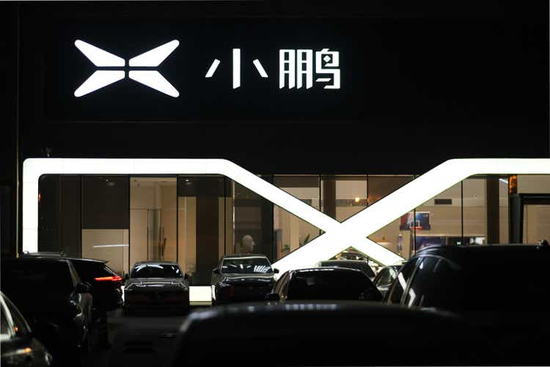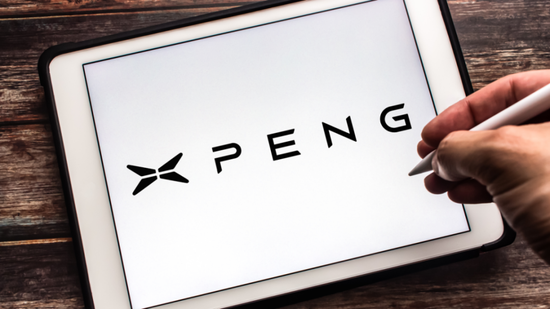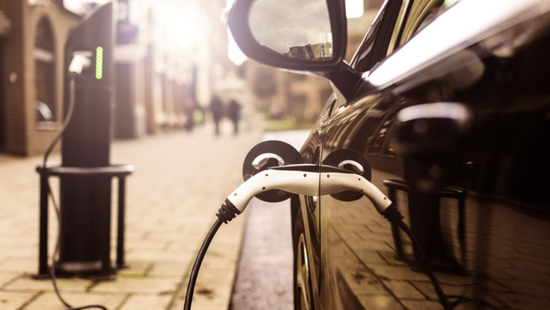
Welcome to the WeChat subscription number of “Sina Technology”: techsina
Text / Ancient Twenty
Source/Technology News (ID: kejixinzhi)
The hotter the weather, the colder the earnings report. At the end of the high temperature, Xiaopeng Motors handed over the financial report with the highest net loss in a single quarter since its listing.
In the financial report released on August 23, the data showed that Xiaopeng Motors had a net loss of 2.709 billion yuan in the second quarter, 1.195 billion yuan in the same period in 2021, and 1.701 billion yuan in the first quarter of 2022. The net loss increased year-on-year and month-on-month.
In addition, this includes a foreign exchange loss of 938 million yuan due to non-operating losses. If this is excluded, the loss of Xiaopeng Motors in the second quarter is basically the same as the previous quarter.
Revenue was basically flat. The financial report data shows that its revenue in the second quarter was 7.436 billion yuan, although it increased by 97.7% year-on-year, but the revenue performance of 7.455 billion yuan in the first quarter dropped slightly by 0.2%, basically maintaining the same level as the previous quarter.
On the whole, Xiaopeng Motors’ second-quarter financial report is a continuation of the first quarter, and it still maintains the basic operating situation that the more it sells, the more it loses.
Although the market has already anticipated the situation of the interim report, the conservative guidance for the third quarter still caused the share price of Xpeng Motors to continue to decline.
Inflexible continuation of a quarterly report
It’s not just financial data that has perpetuated, but also inelastic market investor attitudes.

After the announcement of the second quarter financial report, Xiaopeng Motors ushered in double declines in the US and Hong Kong stock markets. In the U.S. stock market, it once plunged 13.5%, and finally fell 10.8% at the close of the day; in the Hong Kong market, it once fell to 13.4% and touched HK$71.8, the lowest since listing.
Previously, after Xiaopeng Motors announced its first-quarter results on May 23, the U.S. stock market also fell by 5.54%, and fell by 7.55% the next day. The market value evaporated nearly 16.9 billion yuan in just two days.
If the short-term market volatility after the announcement of the financial report is a “common problem”, but over a long period of time, Xiaopeng Motors has continued to decline in the secondary market since late June.
The long-term decline is in stark contrast to NIO, which briefly fell in late June on a short-selling report, and then quickly rebounded amid positive industry and internal responses.
Compared with its peers, Xpeng Motors has performed well in delivery growth, leading for four consecutive quarters, and is the sales champion among the three new car manufacturers. So what is it that suppresses its resilience in the secondary market?
For Xiaopeng Motors, a long-term challenge is cost, which is reflected in the continuously lower gross profit in the financial report data: 10.9% in the second quarter of 2022, compared with 11.9% in the same period of 2021, and 12.2% in the first quarter of 2022 %; the automotive profit margin in the second quarter of 2022 was 9.1%, compared with 11.0% in the same period of 2021 and 10.4% in the first quarter of 2022; both decreased year-on-year and quarter-on-quarter.
As for the reason for the month-on-month decrease, Xpeng Motors said that the increase in revenue from the adjustment of sales prices was partially offset by the increase in battery costs.
However, the offset should be stable and flat with the first quarter, and the decline in the chain gross profit margin may be more able to find the problem from the perspective of product sales structure.
In the product delivery data in the second quarter, the cheapest G3 accounted for 22%, the P5 in the middle of the price band accounted for 32%, and the most expensive P7 delivery accounted for 46%. Selling more cheap G3s may be a major factor in the decline in the gross profit margin of car sales this quarter, in addition to cost increases.
However, thanks to the announcement of the current monthly delivery data of new energy vehicle companies, the market has already expected the decline in gross profit caused by the change in product sales structure.
In addition to the continuous decline in gross profit, the main reason for the sharp drop in Xpeng Motors’ share price after the release of its second-quarter financial report also includes the market’s failure to manage expectations on the demand side.
As the sales champion among Wei Xiaoli, Xiaopeng Motors delivered nearly 34,000 electric vehicles in the second quarter, a year-on-year increase of nearly 98%. But it’s worth noting that deliveries in the second quarter were flat QoQ, thus pointing to a slowdown in demand – which officials also confirmed in their outlook.
Xpeng Motors expects to deliver 29,000 to 31,000 vehicles in the third quarter, an increase of only about 13% to 20% year-on-year. The figure also means that Xpeng itself expects its third-quarter deliveries to drop significantly from the first and second quarters.
Behind the success of the four consecutive quarters of winning the top sales of new forces, the sudden slowdown in delivery expectations is obviously not what investors want to see. However, the good side is that Xiaopeng Motors’ revenue in the third quarter is expected to be 6.8-7.2 billion, although it fell by 3% to 9% month-on-month, but under the guidance of the delivery of 29,000-31,000 vehicles, it means that Xiaopeng Motor’s average The price will increase.
The vacuum period before the advent of G9
Regarding Xiaopeng Motors’ third-quarter delivery guidance of 29,000-31,000, Morgan Stanley issued a report saying that considering that Xiaopeng Motors has delivered 12,000 vehicles in July, it means that the average monthly delivery in August and September is lower than 10,000 vehicles.
For this expected delivery, market analysts believe that it is too conservative. Generally speaking, the main factors affecting the delivery volume arise from the supply side and the demand side.

Looking at the supply side first, due to global supply chain issues, Xpeng Motors recently decided to suspend reservations for its P5 models in Europe, which means that production has not yet reached last year’s level due to intensified supply chain constraints. Market supply chain sources believe this may also be one of the key reasons why Xpeng’s July deliveries fell by nearly a quarter compared with June’s record sales.
In addition to the impact of the global supply chain, Xiaopeng’s internal capacity ramp will not be completed until later this year. Specifically, the current annual production capacity of the Zhaoqing plant of Xiaopeng Motors is close to 100,000 vehicles. Under this production capacity, the current new orders of Xiaopeng Motors will take up to 3-4 months to wait.
After the second-phase expansion of the Zhaoqing plant, the vehicle production line with an annual output of 200,000 vehicles should not be able to keep up with the vehicles delivered in the third quarter. The supply side belongs to inward pressure. For Xpeng Motors, more competition also comes from the outward demand side pressure.
On the demand side, Xiaopeng Motors delivered 12,000 vehicles in July, a year-on-year increase of 43.3% and a month-on-month decrease of 24.7%. The main reasons for the month-on-month decrease are: on the one hand, the preferential subsidies for new energy vehicles in some regions are as of the end of June, and the discount period ends. As a result, Xpeng Motors delivered a record high in June, overdrafting some of its July sales.
On the other hand, the number of mid-to-high-end new energy vehicle brands has increased, and market competition has intensified. From the perspective of product structure, Xiaopeng’s mid-range model P5, which began to be delivered in September last year, has just been less than a year in the product life cycle, and its competitiveness has begun to decline significantly.
In July’s delivery data, P7, P5, and G3i delivered 6,400, 3,600, and 1,500 units, respectively, down 20.5%, 35.5%, and 8.1% month-on-month. Among them, P5 became the model with the most serious decline.
It is not only Xiaopeng that has suffered a serious decline in involution. Before a major breakthrough in autonomous driving has been achieved, the situation of the first batch of new car-making forces is not so ideal.
According to the delivery data in July, the second-generation new carmakers such as Nezha and Leapao ranked first and second with deliveries of 14,000 and 12,000 vehicles, respectively, with a month-on-month increase of 6.7% and 7%. Xiaopeng, Ideal and Weilai delivered 12,000, 10,000 and 10,000 vehicles respectively, down 24.7%, 20% and 22.4% month-on-month.
In the view of car enthusiast Wang Feng, the first generation of new car-making forces started with electric vehicles, and then transformed into intelligent vehicles. But at the moment, in the face of the second generation of new car-making forces, the intelligence of the three Wei Xiaoli can not significantly open up the driving experience, and they are still in the stage of vehicle electrification.
At this stage, the pressure from the second-generation cost-effective strategy with a traditional automobile background will also affect the three brands that are developing in the mid-to-high-end market.
Earlier at the July research meeting, Xiaopeng Motors had stated that because the orders were delivered before the price increase, subject to the increase in battery costs in the later period, the second quarter would be the trough of gross profit margins for the whole year. However, with the price increase, the gross profit margin will rebound strongly in the third quarter, and in the next four quarters, with the launch of G9 and the delivery of orders, there will be further room for the gross profit margin to rise.
However, market investors want more deliveries on top of the upward gross margin. For this kind of expectation, Xiaopeng Motors will bet on the G9.
As the world’s first 800V high-voltage platform model, Xpeng Motors’ flagship SUV model G9, announced the interior and opened reservations on August 10. Just 24 hours later, the order of G9 has exceeded 22,000, far exceeding G3 and P5, and it is still growing rapidly, which shows that user demand is very strong.
However, the official delivery of the G9 will not start until October. After the winter of the mid-year report, Xpeng Motors has no effective means to survive the vacuum period in the third quarter.
He Xiaopeng once said in the era of entrepreneurial UC that the stupid bird will fly first, and the person must be one step ahead. However, with the current gross profit margin, delivery volume, and stock price elasticity all lagging behind its peers, the only way for Xpeng Motors to wait for the spring seems to have only one word – boil.
In the earnings conference call, Xiaopeng Motors can only be more willing to talk about the possibility of the future.
At the level of automotive products, Xiaopeng Motors said that there will be two new models in 2023, one of which will be the standard Model Y, and the other will be a C-segment car for the high-end market. At the software service level, there will be more Xiaopeng self-operated charging stations in the future, and more intelligent software services will also be launched.
As the first generation of new car-making forces, Xpeng Motors, which is full of eyes on the future, is obviously not mature enough and needs more time to grow.
But for market investors, Macquarie analyst Erica Chen downgraded Xpeng Motors from outperform to neutral on August 3 before the second-quarter earnings report, after she downgraded sales and revenue for fiscal 2022. is expected to reflect a slowdown in mid-size car sales growth.
Of the hedge funds tracked by Insider Monkey, 26 funds were bullish on Xpeng Motors by the end of the first quarter of 2022, compared with 29 funds in the previous quarter. Obviously, in the current growth vacuum period, more Xiaopeng investors undoubtedly need a short spring.

This article is reproduced from: http://finance.sina.com.cn/tech/csj/2022-08-24/doc-imizirav9535206.shtml
This site is for inclusion only, and the copyright belongs to the original author.